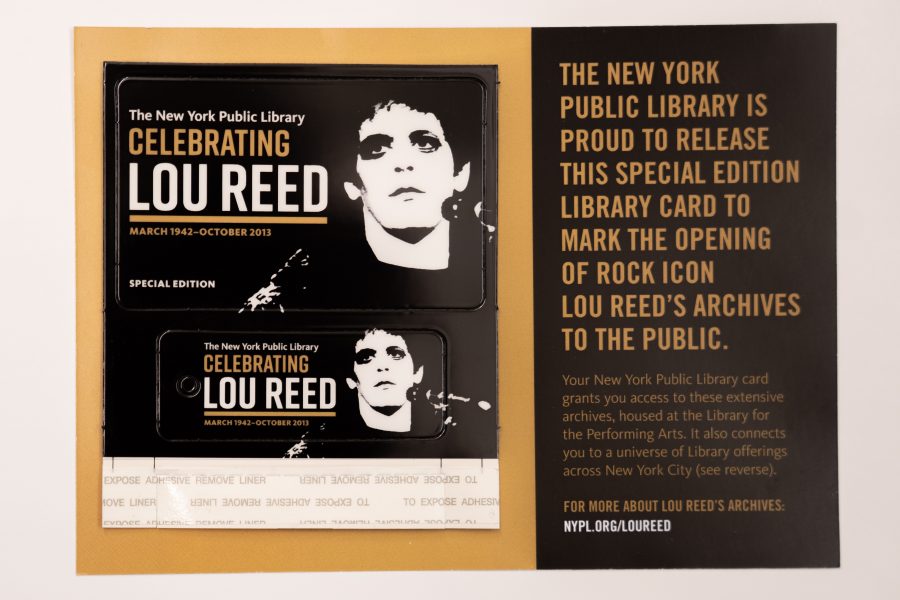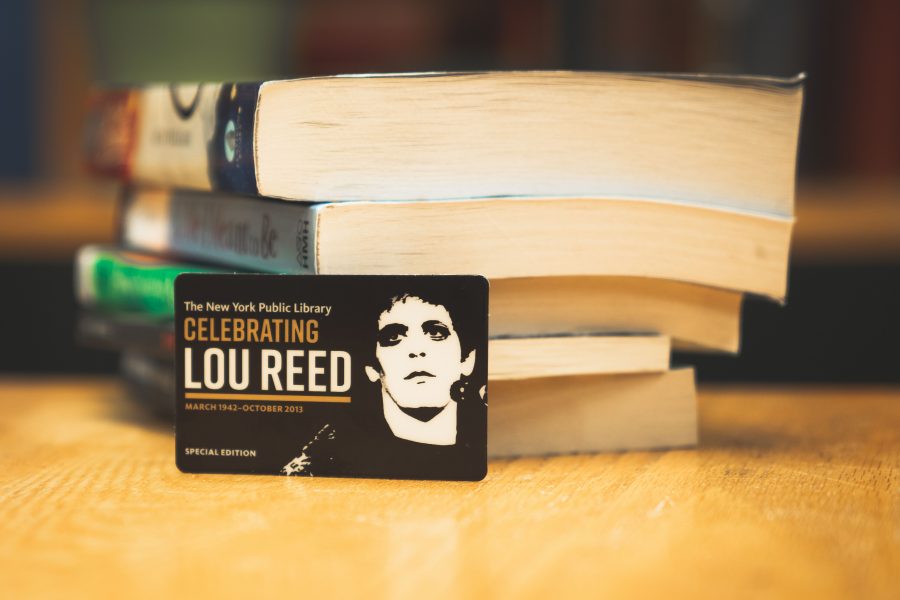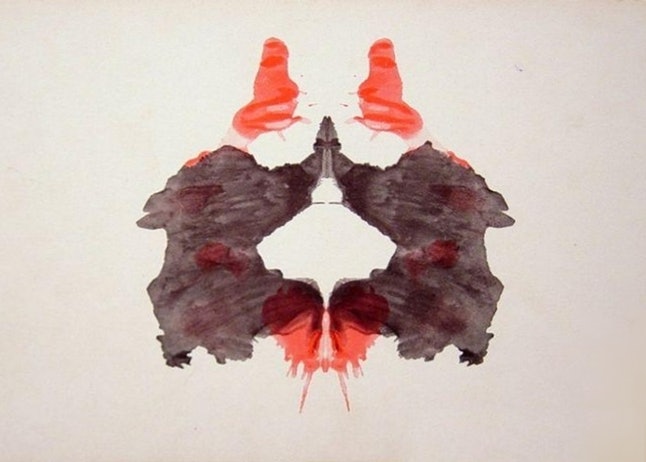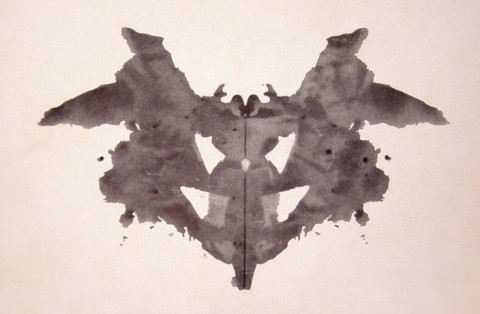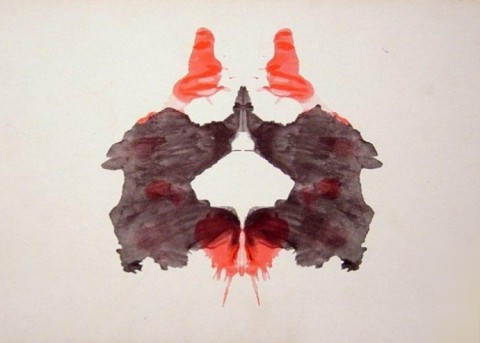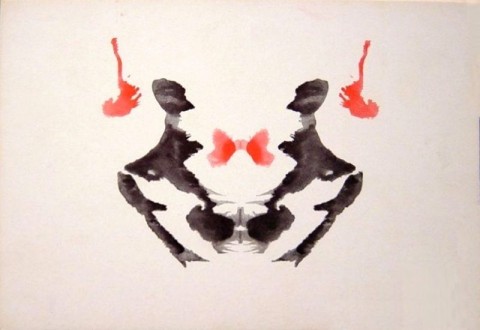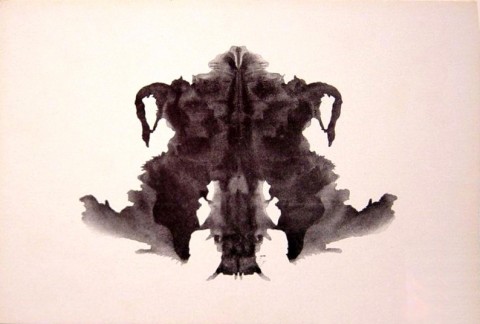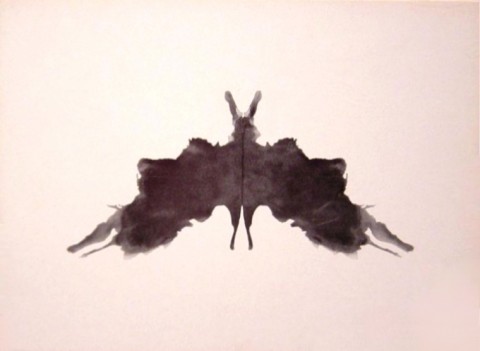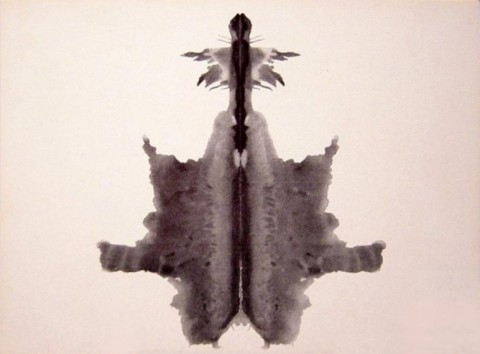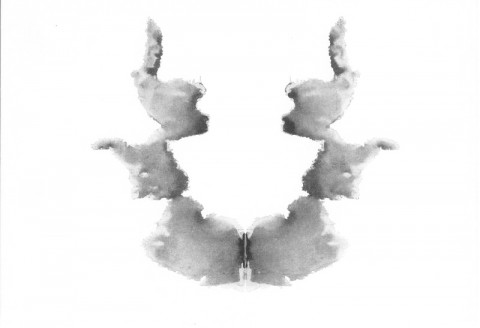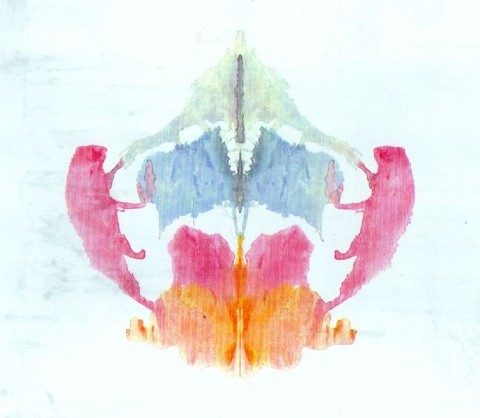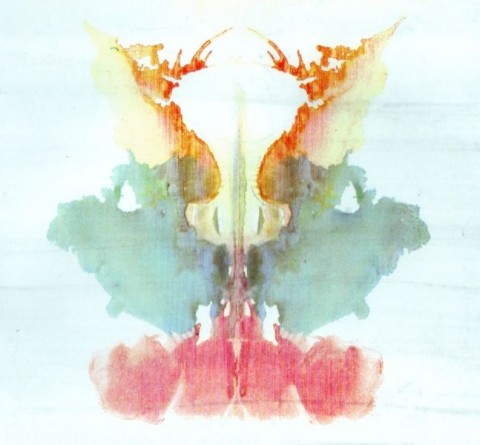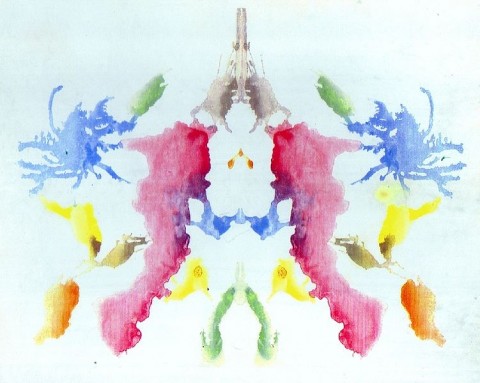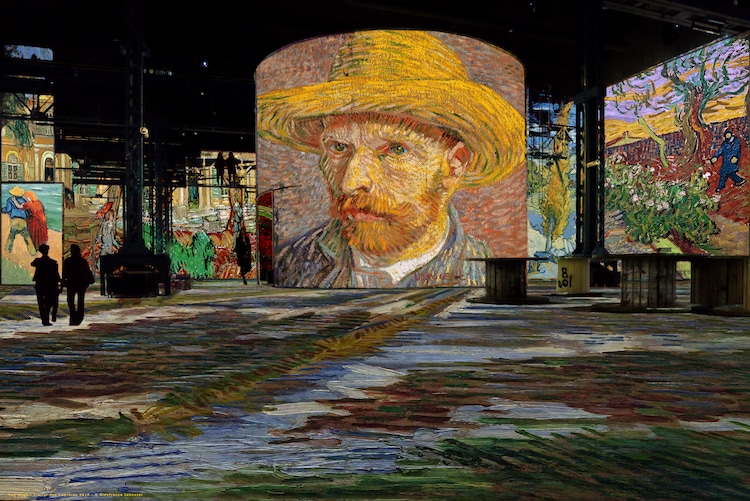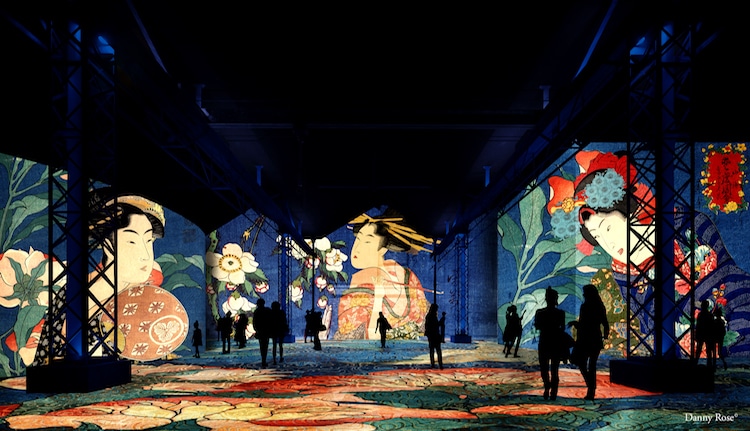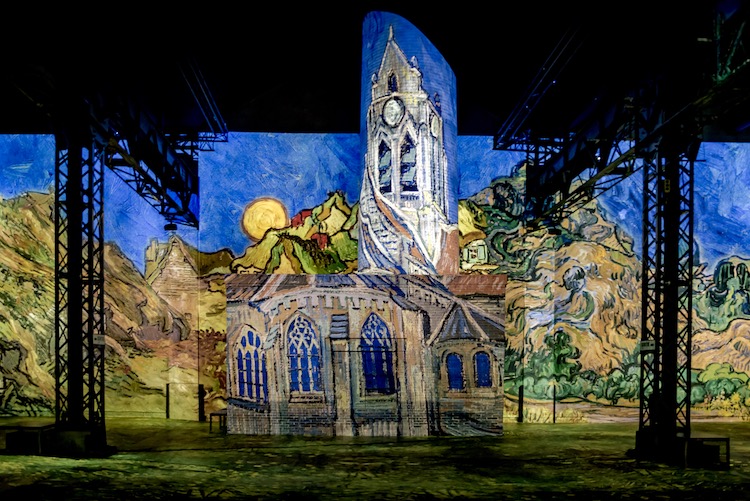[Most Recent Entries] [Calendar View]
Monday, March 18th, 2019
- Original manuscript, lyrics, poetry and handwritten tai-chi notes
- Photographs of Reed, including artist prints and inscriptions by the photographers
- Tour itineraries, agreements, road manager notes and paperwork
- 600+ hours of live recordings, demos, studio recordings and interviews
- Reed's own extensive photography work
- Album, book, and tour artwork; mock-ups, proofs and match-prints
- Lou Reed album and concert posters, handbills, programs, and promotional items
- Lou Reed press for albums, tours, performances, books, and photography exhibits
- Fan mail
- Personal collections of books, LPs and 45s
| Time | Event |
| 2:00p | The Lou Reed Archive Opens at the New York Public Library: Get Your Own Lou Reed Library Card and Check It Out
This past October marked the fifth anniversary of Lou Reed’s death. This month marks what would have been his 77th birthday. It seems like as good a time as any to revisit his legacy. As of this past Friday, anyone can do exactly that in person at the New York Public Library. And they can do so with their own special edition NYPL Lou Reed library card. The NYPL has just opened to the public the Lou Reed Archive, “approximately 300 linear feet,” the library writes in a press release, “of paper records, electronic records, and photographs, and approximately 3,600 audio and 1,300 video recordings.” These artifacts span the musician, writer, photographer, and “tai-chi student”’s life from his 1958 high school band The Shades to “his job as a staff songwriter for the budget music label, Pickwick Records, and his rise to prominence through the Velvet Underground and subsequent solo career, to his final performance in 2013.” It is more than fitting that they should find a home at the New York institution, in the city where Lou Reed became Lou Reed, “the most literary of rock stars,” writes Andrew Epstein for the Poetry Foundation, "one who aspired to make rock music that could stand on the same plane as works of literature.” See a list of the Lou Reed Archive collections below: Reed left his first “lasting legacy” at Syracuse University, as Syracuse itself affirmed after his death in 2013, as “a criminal, a dissident and a poet.” There, he studied under his literary hero, Delmore Schwartz, was reportedly expelled from ROTC for holding an unloaded gun to his superior’s head, and was supposedly turned away from his graduation by police. Once in New York, however, Reed not only piloted the Velvet Underground into everlasting cult infamy, jumpstarting waves of punk, post-punk, new wave, and a few dozen other subgenres. He also carried forth the legacy of the New York poetry, Epstein argues. He had “serious connections to the poetry world”—not only to Schwartz, but also to the Beats and the New York School—to poets who “played a surprisingly large role in the emergence of the Velvet Underground.” Like all great art, Reed’s best work was more than the sum of its “multiple and complex influences.” But it should be appreciated alongside mid-century New York poets as much as jazz experimentalists like Ornette Coleman and Cecil Taylor who inspired his freeform approach. “Reed’s body of work,” writes Epstein, “represents a crucial but overlooked instance of poetry’s rich back-and-forth dialogue with popular culture.”
Similar things might be said about Reed's engagements with film, theater, the visual arts, and the New York avant-garde generally, which he also transmuted and translated into his scuzzy brand of rock and roll. The NYPL archive documents his relationships with not only his bandmates and manager/patron Andy Warhol, but also Robert Quine, John Zorn, Robert Wilson, Julian Schnabel, and Laurie Anderson. And yet, despite the many rivers he waded into in his long career, immersing in some more deeply than others, it was the New York literary world whom he most wanted to embrace his work. Accepting an award in 2007 from Syracuse, Reed said, “I hope, Delmore, if you’re listening you are finally proud as well. My name is finally linked to yours in the part of heaven reserved for Brooklyn poets.” Head over to The Library for the Performing Arts in Lincoln Center to get your own Lou Reed library card. If you’re lucky enough to spend some time with this extensive collection, maybe consider how all Reed's work was, in some way or another, informed by a lifelong devotion to New York poetry. Related Content: Lou Reed Sings “Sweet Jane” Live, Julian Schnabel Films It (2006) Josh Jones is a writer and musician based in Durham, NC. Follow him at @jdmagness The Lou Reed Archive Opens at the New York Public Library: Get Your Own Lou Reed Library Card and Check It Out is a post from: Open Culture. Follow us on Facebook, Twitter, and Google Plus, or get our Daily Email. And don't miss our big collections of Free Online Courses, Free Online Movies, Free eBooks, Free Audio Books, Free Foreign Language Lessons, and MOOCs. |
| 5:30p | How Does the Rorschach Inkblot Test Work?: An Animated Primer A frightening monster? Two friendly bears? Say what!? As anybody with half a brain and the gift of sight knows, the black and red inkblot below resembles nothing so much as a pair of gnomes, gavotting so hard their knees bleed.
...or perhaps it’s open to interpretation. Back in 2013, when Open Culture celebrated psychologist Hermann Rorschach’s birthday by posting the ten blots that form the basis of his famous personality test, readers reported seeing all sorts of things in Card 2: A uterus Lungs Kissing puppies A painted face Little calfs Tinkerbell checking her butt out in the mirror Two ouija board enthusiasts, summoning demons Angels And yes, high-fiving bears As Rorshach biographer Damion Searls explains in an animated Ted-ED lesson on how the Rorschach Test can help us understand the patterns of our perceptions, our answers depend on how we as individuals register and transform sensory input. Rorshach chose the blots that garnered the most nuanced responses, and developed a classification system to help analyze the resulting data, but for much of the test’s history, this code was a highly guarded professional secret. And when Rorshach died, a year after publishing the images, others began administering the test in service of their own speculative goals—anthropologists, potential employers, researchers trying to figure out what made Nazis tick, comedians… The range of interpretative approaches earned the test a reputation as pseudo-science, but a 2013 review of Rorshach’s voluminous research went a long way toward restoring its credibility. Whether or not you believe there’s something to it, it’s still fun to consider the things we bring to the table when examining these cards. Do we see the image as fixed or something more akin to a freeze frame? What part of the image do we focus on? Our records show that Open Culture readers overwhelmingly focus on the hands, at least as far as Card 2 goes, which is to say the portion of the blot that appears to be high-fiving itself. Never mind that the high five, as a gesture, is rumored to have come into existence sometime in the late 1970s. (Rorschach died in 1922.) That’s what the majority of Open Culture readers saw six years ago, though there was some variety of perception as to who was slapping that skin: young elephants despondent humans monks lawn gnomes Disney dwarves redheaded women in Japanese attire chimpanzees with traffic cones on their heads (In full disclosure, it's mostly bears.) Maybe it's time for a do over? Readers, what do you see now? Image 1: Bat, butterfly, moth Image 2: Two humans Image 3: Two humans Image 4: Animal hide, skin, rug Image 5: Bat, butterfly, moth Image 6: Animal hide, skin, rug Image 7: Human heads or faces Image 8: Animal; not cat or dog Image 9: Human Image 10: Crab, lobster, spider, View Searls’ full TED-Ed lesson here. Related Content: Hermann Rorschach’s Original Rorschach Test: What Do You See? (1921) Introduction to Psychology: A Free Course from Yale University Ayun Halliday is an author, illustrator, theater maker and Chief Primatologist of the East Village Inky zine. Join her in New York City for the next installment of her book-based variety show, Necromancers of the Public Domain, this April. Follow her @AyunHalliday. How Does the Rorschach Inkblot Test Work?: An Animated Primer is a post from: Open Culture. Follow us on Facebook, Twitter, and Google Plus, or get our Daily Email. And don't miss our big collections of Free Online Courses, Free Online Movies, Free eBooks, Free Audio Books, Free Foreign Language Lessons, and MOOCs. |
| 6:00p | Take a Journey Inside Vincent Van Gogh’s Paintings with a New Digital Exhibition
Vincent van Gogh died in 1890, long before the emergence of any of the visual technologies that impress us here in the 21st century. But the distinctive vision of reality expressed through paintings still captivates us, and perhaps captivates us more than ever: the latest of the many tributes we continue to pay to van Gogh's art takes the form Van Gogh, Starry Night, a "digital exhibition" at the Atelier des Lumières, a disused foundry turned projector- and sound system-laden multimedia space in Paris. "Projected on all the surfaces of the Atelier," its site says of the exhibition, "this new visual and musical production retraces the intense life of the artist."
Van Gogh's intensity manifested in various ways, including more than 2,000 paintings painted in the last decade of his life alone. Van Gogh, Starry Night surrounds its visitors with the painter's work, "which radically evolved over the years, from The Potato Eaters (1885), Sunflowers (1888) and Starry Night (1889) to Bedroom at Arles (1889), from his sunny landscapes and nightscapes to his portraits and still lives." It also takes them through the journey of his life itself, including his "sojourns in Neunen, Arles, Paris, Saint-Rémy-de-Provence, and Auvers-sur-Oise." It will also take them to Japan, a land van Gogh dreamed of and that inspired him to create "the art of the future," with a supplemental show titled Dreamed Japan: Images of the Floating World.
Both Van Gogh, Starry Night and Dreamed Japan run until the end of this year. If you happen to have a chance to make it out to the Atelier des Lumières, first consider downloading the exhibition's smartphone and tablet application that provides recorded commentary on van Gogh's masterpieces. That counts as one more layer of this elaborate audiovisual experience that, despite employing the height of modern museum technology, nevertheless draws all its aesthetic inspiration from 19th-century paintings — and will send those who experience it back to those 19th-century paintings with a heightened appreciation. Nearly 130 years after Van Gogh's death, we're still using all the ingenuity we can muster to see the world as he did.
Related Content: 13 Van Gogh’s Paintings Painstakingly Brought to Life with 3D Animation & Visual Mapping Van Gogh’s 1888 Painting, “The Night Cafe,” Animated with Oculus Virtual Reality Software Download Hundreds of Van Gogh Paintings, Sketches & Letters in High Resolution Based in Seoul, Colin Marshall writes and broadcasts on cities, language, and culture. His projects include the book The Stateless City: a Walk through 21st-Century Los Angeles and the video series The City in Cinema. Follow him on Twitter at @colinmarshall or on Facebook. Take a Journey Inside Vincent Van Gogh’s Paintings with a New Digital Exhibition is a post from: Open Culture. Follow us on Facebook, Twitter, and Google Plus, or get our Daily Email. And don't miss our big collections of Free Online Courses, Free Online Movies, Free eBooks, Free Audio Books, Free Foreign Language Lessons, and MOOCs. |
| 7:47p | Bohemian Rhapsody’s Bad Editing: A Breakdown Bohemian Rhapsody may have won the Oscar for Best Editing. But video essayist Thomas Flight isn't persuaded. In a 13-minute video, Flight deconstructs a 104-second clip from the biopic, revealing the excessive 60 cuts that make up the scene. That translates into a dizzying cut every 1.8 seconds on average. For Thomas Flight, Bohemian Rhapsody is nothing short of a “masterclass in bad editing.” For you, Flight's video offers a nice short crash course in film editing. According to The Washington Post, the pub scene deconstructed in Flight's video was actually edited by Dexter Fletcher--and not John Ottman, the film editor who helped salvage the film and then won top honors at the Oscars. Asked about the botched scene, Ottman told WaPo: “Whenever I see it, I want to put a bag over my head. Because that’s not my aesthetic. If there’s ever an extended version of the film where I can put a couple scenes back, I will recut that scene!” Follow Open Culture on Facebook and Twitter and share intelligent media with your friends. Or better yet, sign up for our daily email and get a daily dose of Open Culture in your inbox. If you'd like to support Open Culture and our mission, please consider making a donation to our site. It's hard to rely 100% on ads, and your contributions will help us provide the best free cultural and educational materials. Related Content: Scenes from Bohemian Rhapsody Compared to Real Life: A 21-Minute Compilation Bohemian Rhapsody’s Bad Editing: A Breakdown is a post from: Open Culture. Follow us on Facebook, Twitter, and Google Plus, or get our Daily Email. And don't miss our big collections of Free Online Courses, Free Online Movies, Free eBooks, Free Audio Books, Free Foreign Language Lessons, and MOOCs. |
| << Previous Day |
2019/03/18 [Calendar] |
Next Day >> |
